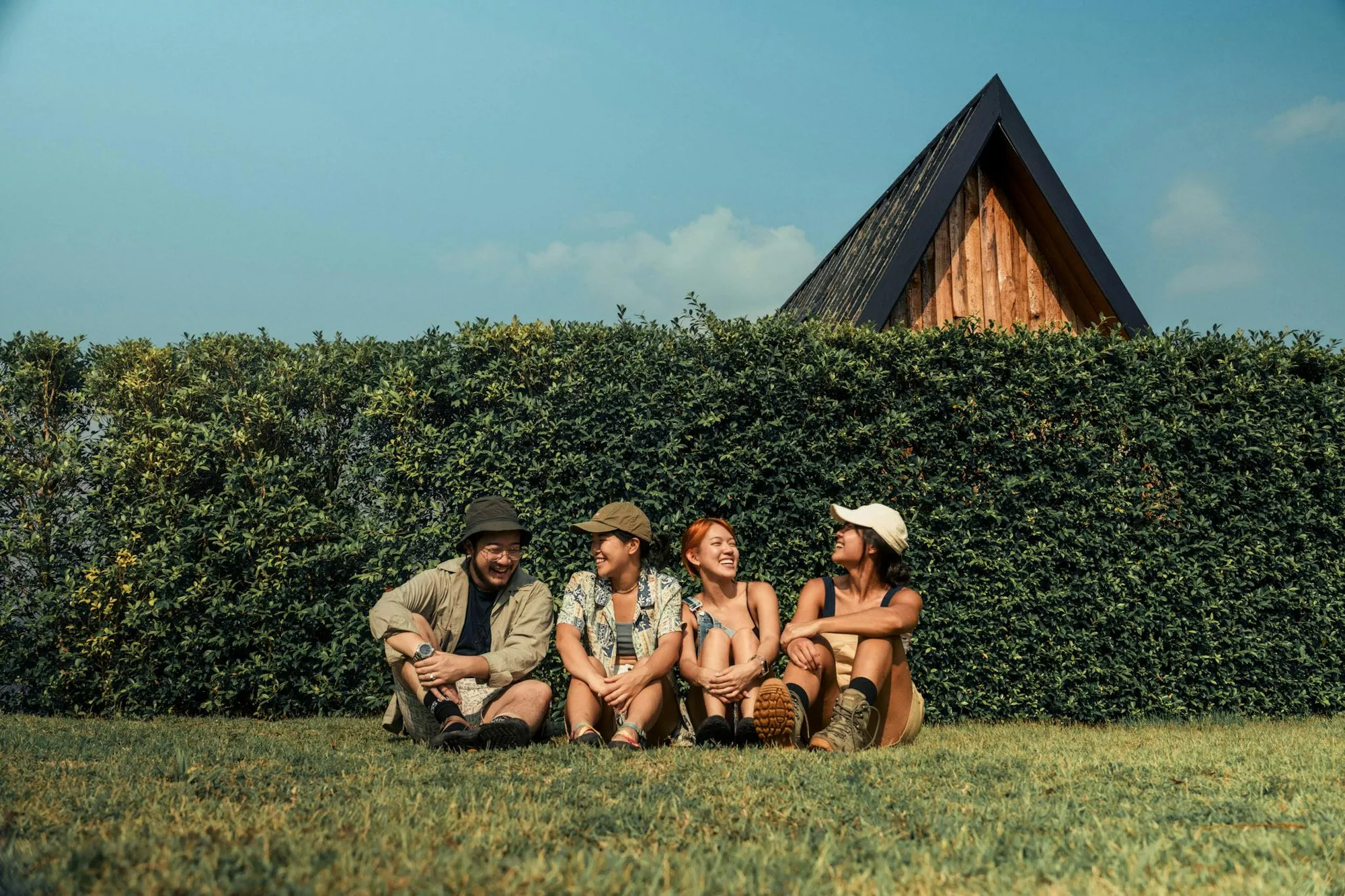Kinabatangan River: Your Essential Guide + Best Things to Do [2025]
The Amazon River of Southeast Asia, and one of the best spots for wildlife spotting!
![Kinabatangan River: Your Essential Guide + Best Things to Do [2025]](https://d18sx48tl6nre5.cloudfront.net/webp_xl_2ab2226d78f64df29a696cf3562799d6.webp)
If you’re a wildlife lover, Kinabatangan River is one of the best places in Southeast Asia to spot wildlife.
It’s not guaranteed of course but if you spend a few days here on river cruises, you’ll likely spot cheeky proboscis long-nosed monkeys, crocodiles and vibrant hornbills. If you’re lucky, you’ll get to see Orangutans observing you from high up in the trees, and and super cute bornean pygmy elephants doing river crossings.
The Basics
Is it Worth Going?
We think so! Kinabatangan River is one of our favourite spots in Southeast Asia for wildlife spotting. It’s basic (don’t expect luxury!), but it's a nice retreat to nature and suitable for all ages. On a river cruise, you'll get the chance to spot orangutans, pygmy elephants, proboscis monkeys, crocodiles, and hornbills!
Best time to go
The dry season, from March to September, is generally considered the best time to visit. During this period, wildlife tends to congregate around the river to drink, so you'll get a better chance of sightings. The weather is also more predictable, making river cruises and jungle treks more enjoyable.
Closest Airport
The nearest airport is Sandakan Airport (SDK) in Sabah, Malaysia. There are no direct international flights to Sandakan, but you can fly directly from other cities within Malaysia, including Kuala Lumpur, Kota Kinabalu, Lahad Datu and Tawau.
Getting there from Sandakan
The journey from Sandakan to the Kinabatangan River takes approximately 2 hours by car. Most lodges and tour operators offer transportation as part of their packages, and will pick you up from Sandakan airport or Sandakan town centre!
Things to Do at Kinabatangan River
Wildlife River Cruises
River cruises are the highlight of any Kinabatangan trip. Most travellers will stay in a rainforest lodge and spend their time doing wildlife river cruises along the Kinabatangan River. All the lodges will offer morning and evening river safaris to spot wildlife. If you're lucky, you may spot elephants crossing the river, or orangutans eyeing you from behind the tree branches!
Note that because this is a wildlife safari, not a zoo, wildlife sightings are not guaranteed - the longer you spend here, the better your chances!
Elephant Cruise
The Kinabatangan River is home to an incredible diversity of wildlife, but elephants aren't always found near the main river stretch. To improve your chances of seeing these majestic animals, some lodges offer a special elephant cruise. Local villagers keep a watchful eye out for elephants and report any sightings to the lodges. If elephants are spotted, the lodge organizes a special cruise to the specific area, greatly increasing your odds of a memorable encounter.
However, since elephants are wild animals, even this special cruise can't guarantee a sighting. Because it's arranged on demand and involves additional effort, there's usually an extra cost compared to the regular river cruise.
Fireflies Cruise
While the Kinabatangan River teems with wildlife, fireflies truly steal the show at night. For a dazzling display that outshines even the Klias River, consider adding a firefly cruise to your itinerary. Some lodges offer these magical excursions as an optional add-on, taking you to a village about an hour and a half away from Sukau, where countless fireflies illuminate the trees and create a magical atmosphere you won't soon forget.
Jungle Walk
Most of the lodges will also offer jungle walks in the afternoon, and in the evening. These walks will give you a closer look at the rainforest's biodiversity, including plants, insects, and smaller animals. However, because the jungle is dense, it's important to make sure that your lodge has a good naturalist guide as otherwise you may not spot anything on these walks.
Turtle Island (Libaran or Selingan)
These nearby islands, Selingan and Libaran, are important nesting grounds for sea turtles. You can witness the awe-inspiring sight of turtles laying eggs or hatching (depending on the season). To visit, you'll need to book a separate day trip or overnight stay, as the islands are not included in standard Kinabatangan lodge activities.
Things to Do at Sandakan
Sepilok Orangutan Rehabilitation Centre
Located near Sandakan, about a 45-minute drive from Kinabatangan River, the Sepilok Orangutan Rehabilitation Centre is dedicated to rescuing and rehabilitating orphaned orangutans, often victims of illegal logging and the pet trade. While Kinabatangan orangutans are truly wild, here you're almost guaranteed to spot them during feeding times (10 am and 3 pm). Some lodges offer transportation to and from Sepilok as an add-on, making your visit hassle-free.
Bornean Sun Bear Conservation Centre (BSBCC)
Located right next to the Sepilok Orangutan Rehabilitation Centre, about 30 minutes from Sandakan and 2 hours from the Kinabatangan River, this Sun Bear Conservation Center is dedicated to the protection of the world's smallest bears. At the BSBCC, you can observe sun bears in their large forest enclosures, learn about their behavior, and the challenges they face in the wild. Some lodges offer transportation to the Sun Bear Conservation Centre as an add-on.
Rainforest Discovery Centre
Located a short walk from the Sepilok Orangutan Rehabilitation Centre and about 30 minutes from Sandakan, the Rainforest Discovery Centre (RDC) is a really nice place to spend a couple of hours or more. We loved the gorgeous tall trees and canopy walkway, and even spotted an eagle when we went! There are lots of different trails here to explore, and if you're lucky you might also spot wildlife like orangutans, civets, and even flying squirrels at night!
Gomantong Caves
If you're an adventurous traveler who doesn't mind getting a little dirty, head to Gomantong Caves, located about 1.5 hours from Sandakan and under an hour from the Kinabatangan River. These caves are famous for their massive populations of bats and swiftlets, whose nests are harvested for the incredibly expensive birds' nests.
There are two main caves to explore: the Black Cave and the White Cave. While the White Cave is primarily for bird nest harvesting, the Black Cave is open to visitors. If you visit at dusk, you'll witness the spectacular sight of millions of bats leaving the cave in a swirling mass. However, this isn't for the faint of heart! The cave is home to various insects, and the smell of bat guano can be quite pungent.
Where to Stay
Stay at the river for more wildlife opportunities
Although it is an option to stay in Sandakan and embark on day tours to Kinabatangan, we highly recommend staying directly on the Kinabatangan River. The lodges here aren't fancy but it's really lovely to be staying by the river, near all the wildlife. Expect 2-3.5 star accommodation here - basically simple but nice eco-lodges nestled in the jungle.
Bilit or Sukau side?
The Bilit side of the river offers a more authentic and local experience, with fewer lodges and a quieter atmosphere. Sukau has a wider range of accommodation options, so most likely you'll end up staying on the Sukau side. Regardless of whether your lodge is at Bilit or Sukau, you will likely end up at the same spots on the river during your safari.
Which lodge would you recommend?
It depends on what you're looking for! Here are our picks:
- Borneo Natural Sukau Bilit Resort - A fantastic eco-friendly jungle retreat enveloped by vibrant foliage. It's one of the nicest lodges at the river.
- Sukau Greenview - This is the most budget-friendly lodge with a ton of heart. We love the team here, and they also have some of the best naturalist guides in the area.
- Nasalis Larvatus - This is a comfy and mid-budget lodge, that have done a lot for conservation initiatives in the area. They also offer an action-packed itinerary!
Planning your Itinerary
How much time do I need?
While a day trip from Sandakan is possible, it only leaves time for one river cruise, so your chances of spotting wildlife are slim!
For a better experience, we highly recommend staying overnight at a lodge on the river. A 2-day, 1-night (2D1N) stay allows for two river safaris, while the ideal 3-day, 2-night (3D2N) option includes 4-5 river safaris and jungle treks. As wildlife sightings are never guaranteed, the longer you stay, the higher your chance of spotting elephants and orangutans!
What's a typical itinerary?
Here’s what you can expect from a 3D2N trip to Kinabatangan River: Day 1: Arrive in Sandakan, transfer to Kinabatangan, afternoon river cruise. Day 2: Morning river cruise, afternoon rainforest walk and evening river cruise. Some lodges will offer a night walk (optional). Day 3: Morning river cruise and depart for Sandakan.
If you have an extra day, you can do a day trip to Turtle Island to witness their conservation efforts.
Kinabatangan and Conservation
How Tourism Saved Kinabatangan from Deforestation
Just 30 years ago, Kinabatangan faced a bleak future. Rampant deforestation for palm oil plantations threatened its lush landscapes and diverse wildlife. Only a narrow strip along the river remained as a refuge for the animals. Travelers seeking unique wildlife encounters discovered Kinabatangan's hidden treasures.
As tourism grew, so did the influx of money, benefiting local communities and fueling conservation efforts. The government, recognizing the economic potential of ecotourism, shifted its focus from exploitation to preservation. This is why Kinabatangan River and its biodiverse ecosystem still exists today!
Kinabatangan River Experiences FAQs
You can secure your booking by paying directly on the site. Since spots fill up quickly, we do not offer instalments—payment must be made in full at the time of booking.
However, your payment is not taken immediately when you request a spot. Your payment method will only be charged once your booking is confirmed, which typically happens within 24 hours. If your request isn’t confirmed, you won’t be charged.
Booking in advance is highly recommended, especially during the dry/high season (March–September). Some budget homestays might take walk-ins, but if you want a smooth trip, book ahead.
You need to book a lodge or tour—you can’t just show up and rent a boat. Lodges offer package deals that include boat safaris, accommodation, and meals.
Nope! There’s no entrance fee—you only pay for your lodge and boat safaris.
Kinabatangan River is Sabah’s longest river, stretching for 560 kilometers, flowing from the Crocker Range in the west all the way to the Sulu Sea in the east. The river is an essential waterway supporting an extensive floodplain that fosters incredible biodiversity, making it one of the best wildlife destinations in Southeast Asia. It’s home to Borneo’s "Big Five": pygmy elephants, orangutans, proboscis monkeys, crocodiles, and rhinoceros hornbills, as well as numerous bird and reptile species.
This region faces serious environmental challenges, particularly from oil palm plantations that encroach on wildlife habitats. However, several protected areas, such as The Lower Kinabatangan Wildlife Sanctuary offer refuge to species that call this place home.
The Kinabatangan offers a unique opportunity for travelers to explore river-based wildlife safaris and immerse themselves in one of Borneo's most significant ecosystems.




























